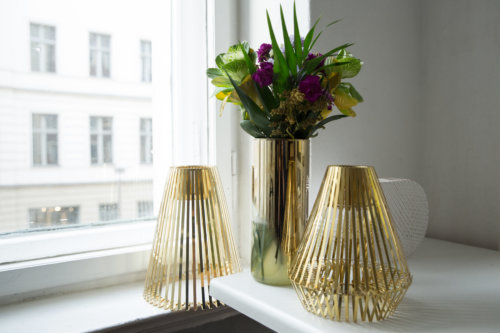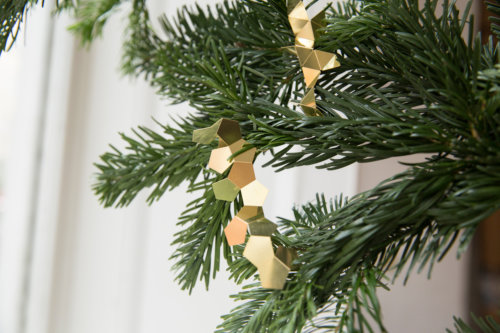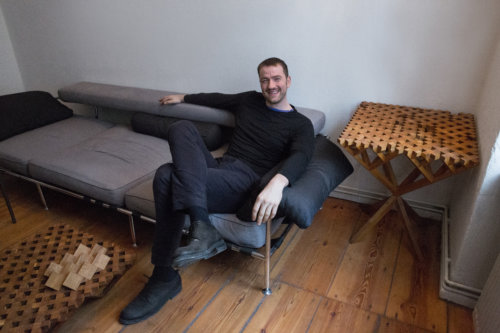
Inspired by the Mathematics of Nature, Fundamental.Berlin’s Homewares Are Made To Last
Fundamental.Berlin is a furniture and homewares design hub that incorporates the beauty and awe of nature into their bespoke line of products. It was founded by Gunnar Rönsch and Stephen K Molloy in 2011, and since that time the collaborative has been making beautiful objects based on five core beliefs: (1) that patterns grow in the mind, (2) that homewares should provide comfort, convenience, and have a sentimental value, (3) that order is hierarchy, (4) that happiness is the longing for repetition, and (5) that “you haven’t really owned anything until you have fixed it”. “The attainment of perfection, were it possible, would be a sort of death,” the brand writes on their blog. “We seek perfection, we are driven to excel, but it is the process through which perfection is sought that ennobles us and elevates our state”.
Below, Garden Collage speaks with Stephen K. Molloy, one-half of Fundamental.Berlin, about their process, the collective’s chic plant vessels, and how Fundamental’s design ethos came to be.
GC: What is the story behind Fundamental.Berlin?
SKM: My partner Gunnar and I are architects, and generally our aim is to visualize the mathematical structure of nature in our design. Five years ago, we started to design products as a secondary business, and our homewares have become so successful that they are now the main theme of our business. Our products (a selection of baskets, vases, frames, plant hooks, lighting, tableware, and other home goods that lend themselves well to botany) are inspired by organic structures and materials. For the tables, we [used nature as a model] and reduced it to the binary logic of computers. The shells follow the shape of honeycombs, divided into triangles, which can represent three-dimensional organic shapes. In our Tillandsia plant vessel, we refer to its origin, the South American Jungle, and the journey: the navigational instruments of early intercontinental shipping. These form a contrasting constructive framework for the natural phenomenon of these plants (to create a “vase” which you can see in the banner image above).
Gc: How many people are involved?
SKM: Next to me and my Partner Gunnar Rönsch, there are Tenzin Heatherbell, Mathilde Dewarvrin, Nikoali Aare, and Clinton Sheldon.
GC: What are your goals for the future?
SKM: We are just about to set up a shop on the ground floor of this house, opening on the 17th of November. [Editor’s note: the shop is now live!] We are pursuing a cross-selling concept in which three parties are involved. One-third of the rent is paid by us, one-third is paid by a café, and the last portion by a supplier of street food that will change daily. In this way, all of us win and we create an attractive offer for visitors to the store. In addition, we are experimenting with pop-up stores in different cities in the pre-Christmas period to see how our products are accepted there.
GC: What is the most difficult aspect of managing this project?
SKM: We first underestimated the communicative aspect of [objects]. In the beginning, we wanted to make things that we liked– but this is not a dialogue, it’s a show. This is typically so in architecture, where you are rarely involved with users, but instead work with many intermediaries, such as investors, operators, offices, etc.
For products, especially those that are given away, the process is quite different. On the one hand, we receive a lot of constructive feedback from the people who buy our products. This dialogue has surprised us. On the other hand, objects also communicate and are [symbols of] communication themselves. Especially when giving gifts: the moment someone makes a decision to give a gift, the object [is imbued with meaning]. The object stands for the moment and it carries this process forward, as a witness.
GC: Any funny or interesting anecdotes?
SKM: When we were able to produce the first products, factories in Europe did not even want to talk to us at production volumes of 100 or 1000 pieces. Surprisingly, Chinese companies were the only ones who worked with us in such small editions. Communication takes place mainly via Skype, pictures, and the sending of models and prototypes. Ironically, we have had to say good-bye to production in Asia, meanwhile, because customers connect Chinese production with mass production.
GC: What advice do you have for aspiring designers?
SKM: This sounds banal, but it take some time to learn: cheap products sell better!




































